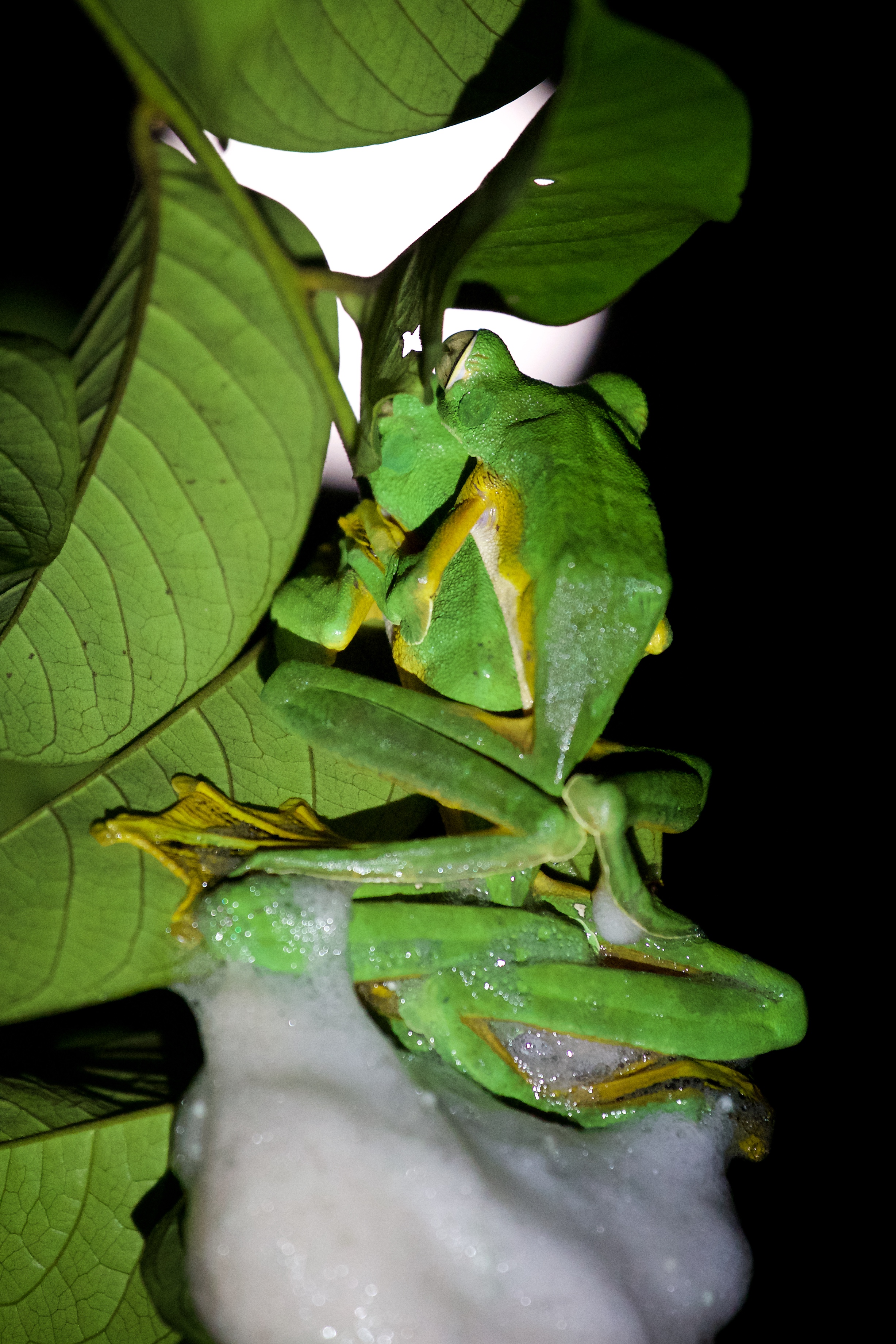What happens late at night in a field camp? Usually, not much beyond eating, cleaning gear, and preparing data and instruments for another day of work. But the forest remains full of promise, and the possibility of exploration is there.
On our project in northern Borneo, I had occasion one evening to be out walking under the light of a full moon, when someone noticed a strange foamy structure hanging from a low branch of a nearby tree.
The moon was full, and it turned out to be pair of Wallace’s flying frogs (Rhacophorus nigropalmatus). I had never seen a flying frog before.
They were mating, and producing a large bubble nest structure that would hold their eggs for the coming weeks. It was fascinating to watch them dance with each other while their branch swayed in the wind.
The frog was first described to western science by Alfred Russell Wallace, in his book, The Malay Archipelago (1869):
One of the most curious and interesting reptiles which I met with in Borneo was a large tree-frog, which was brought me by one of the Chinese workmen. He assured me that he had seen it come down in a slanting direction from a high tree, as if it flew. On examining it, I found the toes very long and fully webbed to their very extremity, so that when expanded they offered a surface much larger than the body……This is, I believe, the first instance known of a “flying frog,” and it is very interesting to Darwinians as showing that the variability of the toes which have been already modified for purposes of swimming and adhesive climbing, have been taken advantage of to enable an allied species to pass through the air like the flying lizard.
A few weeks later I saw another individual, this time not mating, and had the chance to look at it one more closely. It was brightly colored and charismatic, with long webbed toes enabling it to glide between trees higher in the canopy. I later learned that it is very rare to see it so low to the ground except in mating season.
A magical find on a moonlit night, and surely better than dealing with data sheets and dirty clothes in camp. Almost all of my ecology happens during the day, but experiences like this bring a deep curiosity for what happens in a forest when the night falls…




